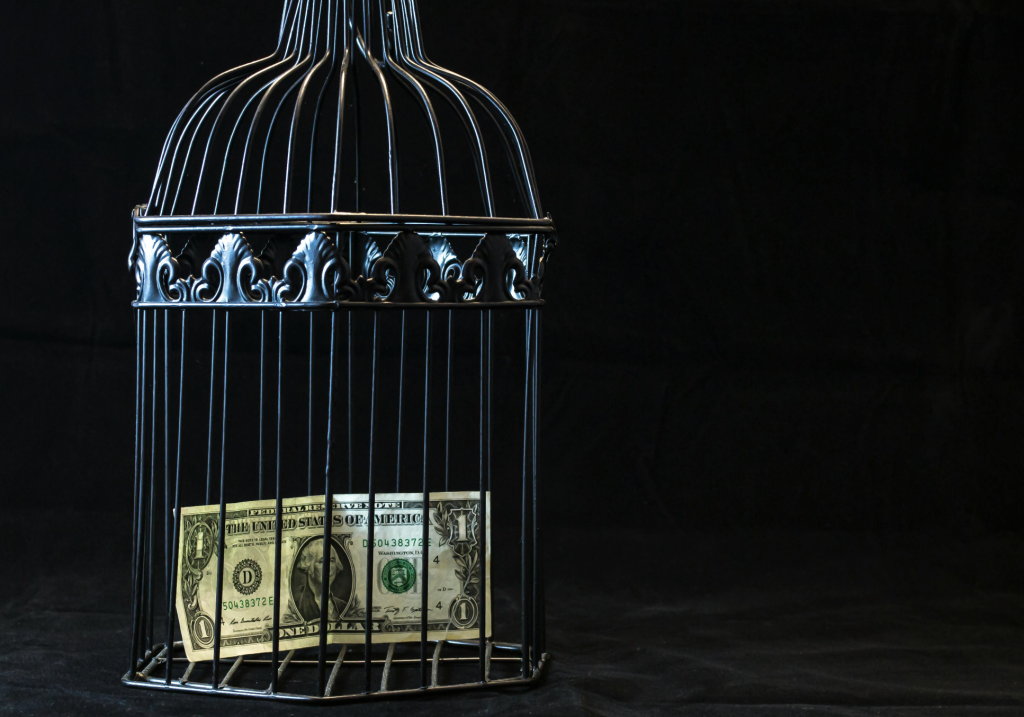
Image Source: 123rf.com
Those “free” trials lurking in your credit card statement might seem harmless individually, but collectively, they’re silently draining your vacation fund. The average American spends over $200 monthly on subscription services, with 42% admitting they’ve forgotten about active subscriptions they no longer use. That’s $2,400 annually—enough for a week-long beach getaway or a European adventure. These forgotten digital parasites attach to your finances through clever marketing and psychological tricks, making it painfully easy to sign up and conveniently difficult to cancel.
1. The Subscription Trap: How Companies Keep You Paying
Subscription services have mastered the art of passive income—for them, not you. They rely on what behavioral economists call “status quo bias,” our tendency to stick with current situations. Companies deliberately make cancellation processes complex, often requiring phone calls during limited hours or navigating maze-like website sections.
According to a 2023 C+R Research study, 78% of consumers have continued paying for subscriptions simply because they forgot to cancel before the trial ended. While convenient, the auto-renewal feature serves primarily as a profit-generating mechanism for companies.
Most subscription services require credit card information upfront, even for “free” trials. They’re betting on your forgetfulness—and winning. The psychological friction of cancellation combined with the minimal effort of continuing creates the perfect environment for subscription creep.
2. The Real Cost: Small Leaks Sink Big Dreams
That $8.99 monthly streaming service might seem insignificant, but subscription costs compound dramatically. Let’s do the math:
A forgotten fitness app ($19.99/month), a premium news subscription ($12.99/month), an unused meditation service ($9.99/month), and a cloud storage upgrade ($5.99/month) total $48.96 monthly—or $587.52 annually.
If invested instead at a modest 5% return, that amount would grow to over $3,000 in five years. That’s a weekend getaway you’re sacrificing for services you don’t use each year.
The opportunity cost extends beyond vacations. These forgotten subscriptions represent:
- Six months of coffee shop visits
- A year of date nights
- Emergency fund contributions
- Home improvement projects
Each subscription seems small in isolation, but together they create a significant financial drag.
3. Digital Decluttering: Finding and Eliminating Subscription Waste
Taking inventory of your digital commitments is the first step toward reclaiming your vacation fund. Start by examining your credit card and bank statements for recurring charges. Many people are shocked to discover they’re paying for 5-7 services they rarely or never use.
Several tools can help automate this process:
- Subscription tracking apps scan your accounts to identify recurring payments
- Calendar reminders set before free trials end
- Email filters to flag subscription-related messages
When signing up for new trials, use these strategies:
- Create calendar events for cancellation deadlines
- Use virtual credit cards with spending limits
- Consider prepaid cards for trials to prevent automatic renewal
The most effective approach is to implement a quarterly subscription audit. Review every service and ask, “Would I sign up for this again today at this price?” If the answer is no, cancel immediately.
4. Psychology Hacks: Outsmarting Your Subscription Tendencies
Understanding the psychological triggers that lead to subscription accumulation helps break the cycle. Companies leverage what psychologists call the “endowment effect”—our tendency to value things more once we own them. This makes cancelling feel like losing something, even when we’re not using it.
Combat this by reframing subscriptions as active purchases rather than background expenses. Each month, ask yourself: “Would I walk into a store today and pay $X for this service?” This mental shift transforms passive spending into conscious decisions.
Another effective technique is the “subscription budget.” Allocate a specific amount for all subscriptions combined. When considering a new service, you must either eliminate an existing one or consciously increase your budget. This creates natural resistance to subscription creep.
Most subscription spending happens below our conscious awareness. We regain control by bringing these expenses into our active decision-making process.
5. From Subscription Savings to Vacation Reality
Visualizing the alternative is the most powerful motivation for tackling subscription waste. Create a dedicated “Vacation from Subscriptions” savings account where canceled subscription amounts are automatically transferred.
A family eliminating $150 monthly in unused subscriptions would accumulate $1,800 annually—enough for:
- A week at a beach resort
- Multiple weekend getaways
- A significant portion of an international adventure
To maximize impact, consider these steps:
- Calculate your “subscription freedom date”—when savings will fund your dream trip
- Create a visual reminder of your destination
- Set up automatic transfers equal to canceled subscription amounts
- Track progress visually to maintain motivation
The psychological reward of watching your vacation fund grow provides immediate gratification that counteracts the minor loss of canceling unused services.
The Freedom Beyond Your Inbox
Subscription management isn’t just about saving money—it’s about reclaiming control over your financial life. Each cancellation represents a conscious choice to prioritize experiences over digital clutter. The real cost of forgotten subscriptions isn’t measured in dollars alone, but in missed opportunities and experiences.
You transform financial leakage into intentional living by implementing regular subscription audits, using psychological techniques to combat subscription inertia, and redirecting savings toward meaningful experiences. Your future self, relaxing on that beach or exploring that city you’ve always wanted to visit, will thank you for the subscription cleanup you undertake today.
Have you ever calculated how much you spend on subscriptions you rarely use? What dream vacation could those funds make possible for you?
Read More
6 Reasons You Should Always Get Your Taxes Done Early
Can Families Still Afford a Trip to Disney?

Travis Campbell is a digital marketer/developer with over 10 years of experience and a writer for over 6 years. He holds a degree in E-commerce and likes to share life advice he’s learned over the years. Travis loves spending time on the golf course or at the gym when he’s not working.








